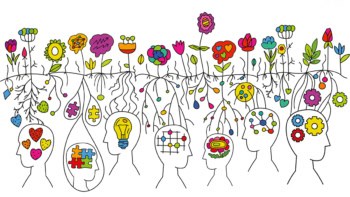Adam Fortais explains how the “At-Home Lab Kit” allows undergraduate students at McMaster University to do physics experiments while sheltering in place. This post is part of a series on how the COVID-19 pandemic is affecting the personal and professional lives of physicists around the world. If you’d like to share your own perspective, please contact us at pwld@ioppublishing.org.

What is the point of a first-year physics lab? As lab instructors, we had to grapple with that question when we learned that the summer term at McMaster University would be done online because of the COVID-19 pandemic. We had to consider not just what we could accomplish with the lab assignments we gave, but also, what we wanted our students to accomplish
Traditionally, our course (1A03) included eight hours of in-lab work, done in groups of 2-3 under the close supervision of teaching assistants. Students also did one major at-home experiment of their choice. When it was announced that the summer term would be online, me and my colleagues Sara Cormier and Kari Dalnoki-Veress decided to develop a kit that students could use to do all the experiments for the course at home.
For our cohort, who are mainly life science students (and in many cases not excited to be taking physics), we thought that a more pragmatic approach focusing on building experiments, collecting good data, and developing a physical intuition for the concepts in the course would better suit their needs. However, the COVID-19 shelter-in-place order was going to make obtaining materials and performing experiments difficult for students. Our solution was to mail each student a tiny “At-Home Lab Kit”.
The contents of the kits were simple by design (see figure). Using household items, we wanted to reinforce the connection between the real world and what they learn in class. Additionally, the labs focused on determining what they can measure with limited tools, and how those measurements can be turned into reproducible data that can be used to test a theory. Indeed, the skills developed by doing these experiments go well beyond what we usually teach in this first year course.
Exceptional accuracy
Students were surprised by the kind of results that can be obtained with such simple items. In the first lab session, students collected data that allowed them to measure the acceleration due to gravity with exceptional accuracy. Another lab used a clear plastic box, protractor, and some pins to measure the index of refraction of water. Further experiments with diffraction were done and students investigated total internal reflection, which is crucial to the operation of optical fibres for telecommunication.
With a bouncy ball, students measured the time between successive bounces to investigate energy transfer, energy loss, and the validity of concepts like conservation of energy and momentum. And of course, no first-year course would be complete without dealing with frictional forces. In pre-COVID times, students would use a digital force-transducer to make precise measurements. This year, they were given a spring (a coiled-plastic keychain). An example of how students had to calibrate their spring and make measurements is shown in the video below.
Early action and planning were crucial to the success of this project. Despite the simplicity of the kits, we first had to obtain approval from the university’s Crisis Management Group, convincing them the kits were safe to be sent to students. Perhaps misunderstanding our intentions, we were asked to provide Workplace Hazardous Materials Information System assessments for each object to be shipped. In the end, we all agreed students already understood how to safely handle and store rulers and elastic bands.

Physics in the pandemic: ‘Our habit of combining theory and experiments was an advantage for the lockdown’
More difficult were dealing practical issues like shipping over 200 kits across the world. For students who were unable to receive packages (including several undergoing a 21-day hotel-based quarantine), we offered one-on-one advice on scavenging for materials — a skill that, as an experimental physicist, I take pride in. In only two cases could students not perform the labs themselves. For them, we provided videos that they could make measurements from.
At the time of writing, we are releasing the final lab exercise for the course, and early feedback from students has been very positive. Though we wish we could be back in our labs in September, we are thrilled to share these labs with 900 more students in the fall term. We are confident that we are not simply making the best of a bad situation; we are providing a unique experience for our students that will hopefully compliment whatever path they take at McMaster.



